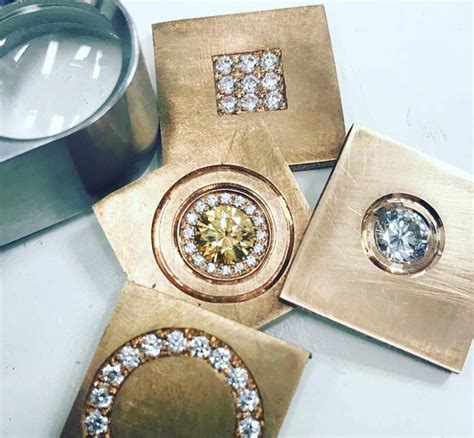Title: Micro-Pave Bead Calibration: Ensuring Precision in Jewelry Crafting
Introduction:

Micro-pave bead calibration is a crucial process in the jewelry industry, particularly for those who specialize in creating intricate and delicate pieces. This technique involves setting numerous tiny beads on a surface, such as a metal or gemstone, to create a stunning, sparkling effect. In this article, we will delve into the importance of micro-pave bead calibration and provide insights on how to achieve precision in this intricate art form.
I. The Significance of Micro-Pave Bead Calibration
1. Aesthetics: Proper calibration ensures that the beads are evenly distributed, resulting in a uniform and visually appealing design. This is essential for creating jewelry pieces that catch the eye and stand out from the competition.
2. Durability: Well-calibrated micro-pave beads are less likely to come loose or fall off, ensuring the longevity of the jewelry piece. This is particularly important for high-end and luxury jewelry, where customers expect exceptional quality and craftsmanship.
3. Efficiency: Achieving precision in micro-pave bead calibration can save time and resources in the jewelry-making process. By streamlining this step, artisans can focus on other aspects of jewelry design and production.
II. Key Factors in Micro-Pave Bead Calibration
1. Bead Size and Shape: The size and shape of the beads play a significant role in the overall look and feel of the jewelry piece. Ensuring that the beads are uniform in size and shape is crucial for a cohesive and professional appearance.
2. Setting Technique: The method used to set the beads can impact the final outcome. Proper calibration requires a steady hand, precise placement, and attention to detail.
3. Adhesive and Tools: The choice of adhesive and tools can affect the durability and overall quality of the micro-pave bead setting. Using high-quality adhesives and tools specifically designed for micro-pave bead calibration is essential.
III. Tips for Achieving Precision in Micro-Pave Bead Calibration
1. Practice: Like any skill, micro-pave bead calibration requires practice. Spend time honing your technique to develop a consistent and reliable process.
2. Use a Magnifying Glass: Working with such small beads can be challenging. Utilize a magnifying glass to get a closer look and ensure precision in your bead placement.
3. Be Patient: Take your time and don’t rush the process. Patience is key to achieving a high-quality, micro-pave bead setting.
4. Seek Feedback: Share your work with fellow jewelers or mentors to gain feedback and identify areas for improvement.
Conclusion:
Micro-pave bead calibration is a vital aspect of jewelry crafting that requires precision, patience, and practice. By focusing on key factors such as bead size, setting technique, and adhesive choice, jewelers can create stunning, long-lasting pieces that captivate their audience. Invest time in perfecting your micro-pave bead calibration skills to elevate your jewelry-making expertise.
